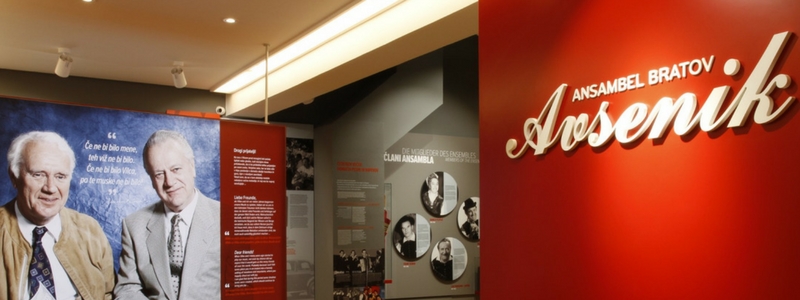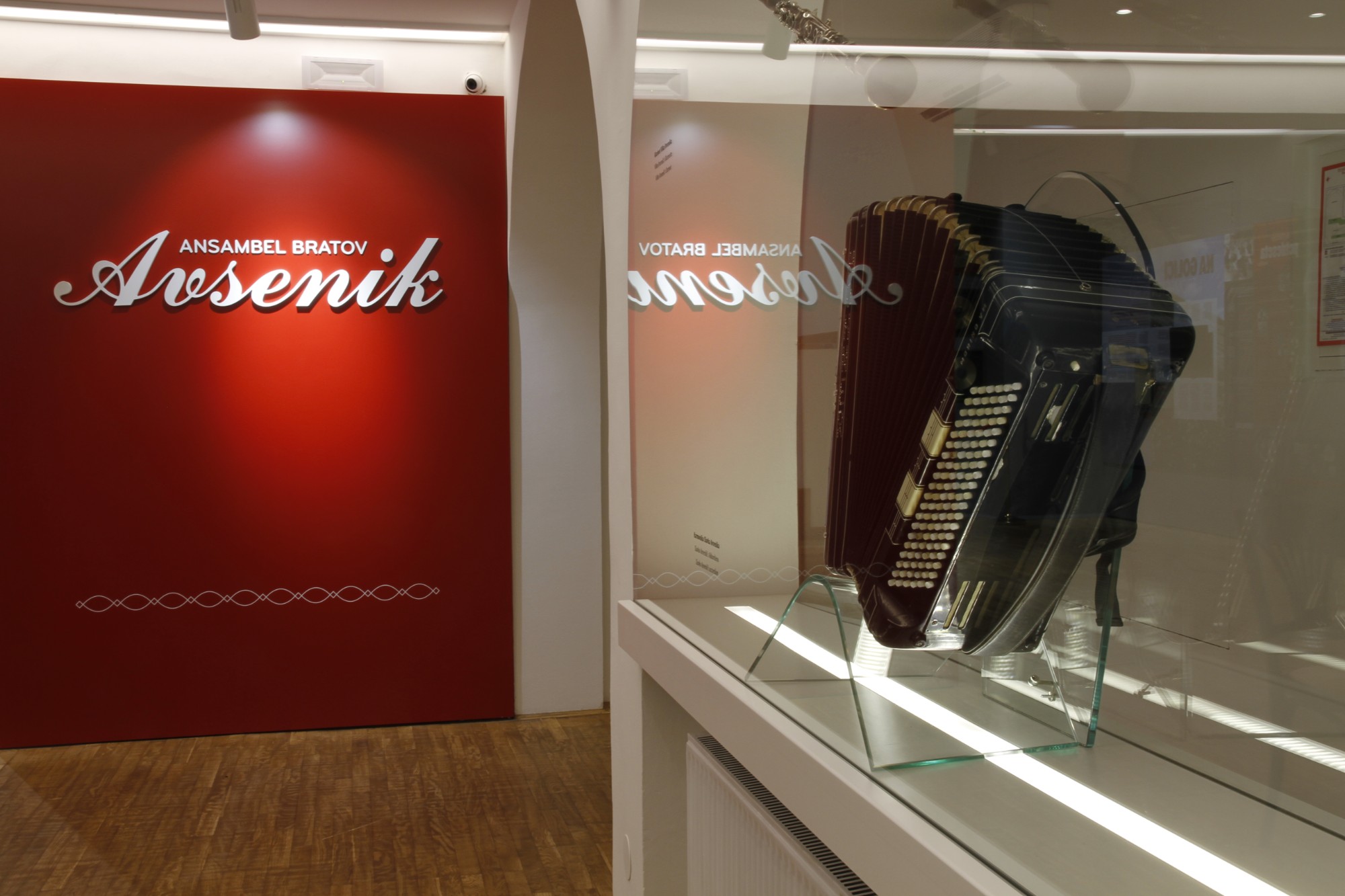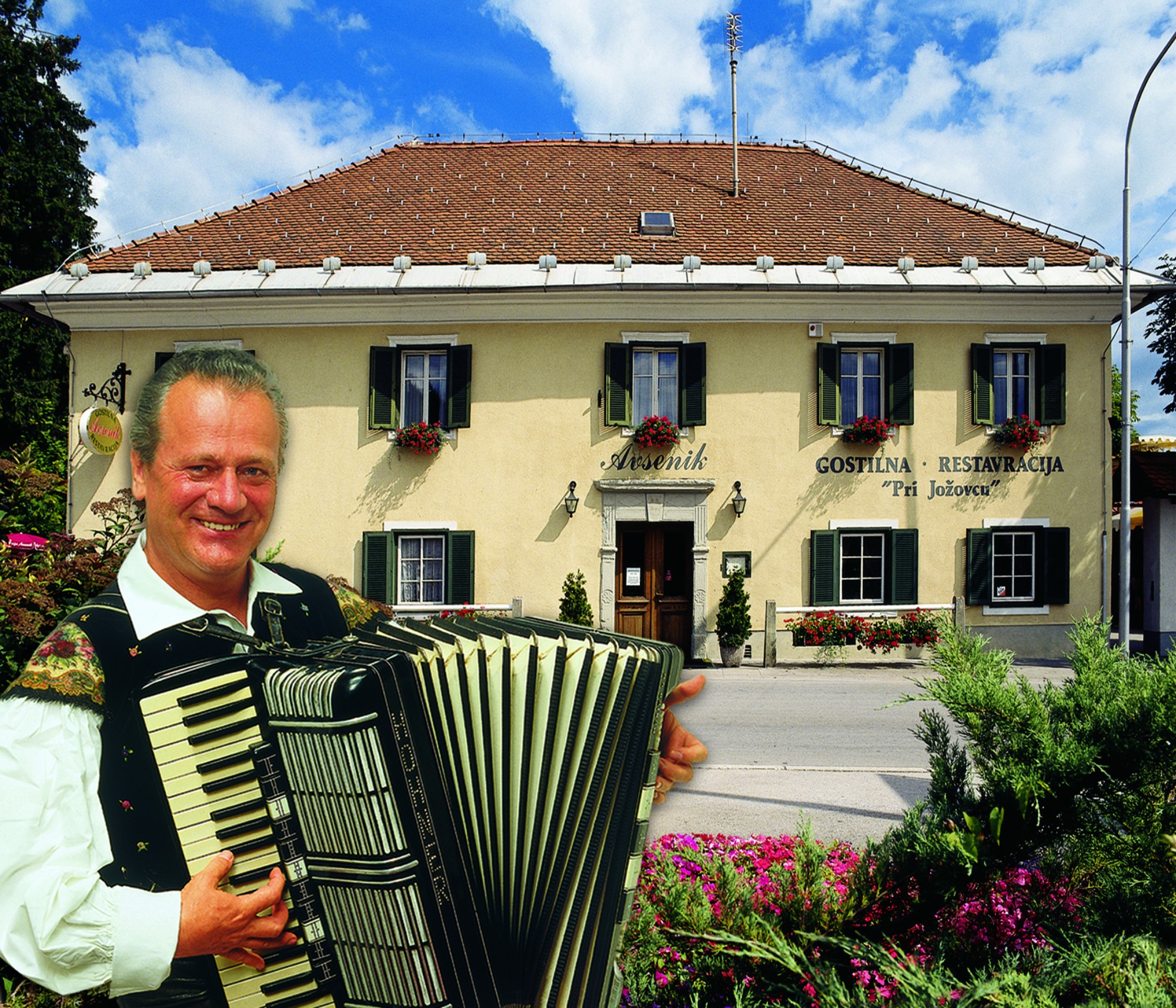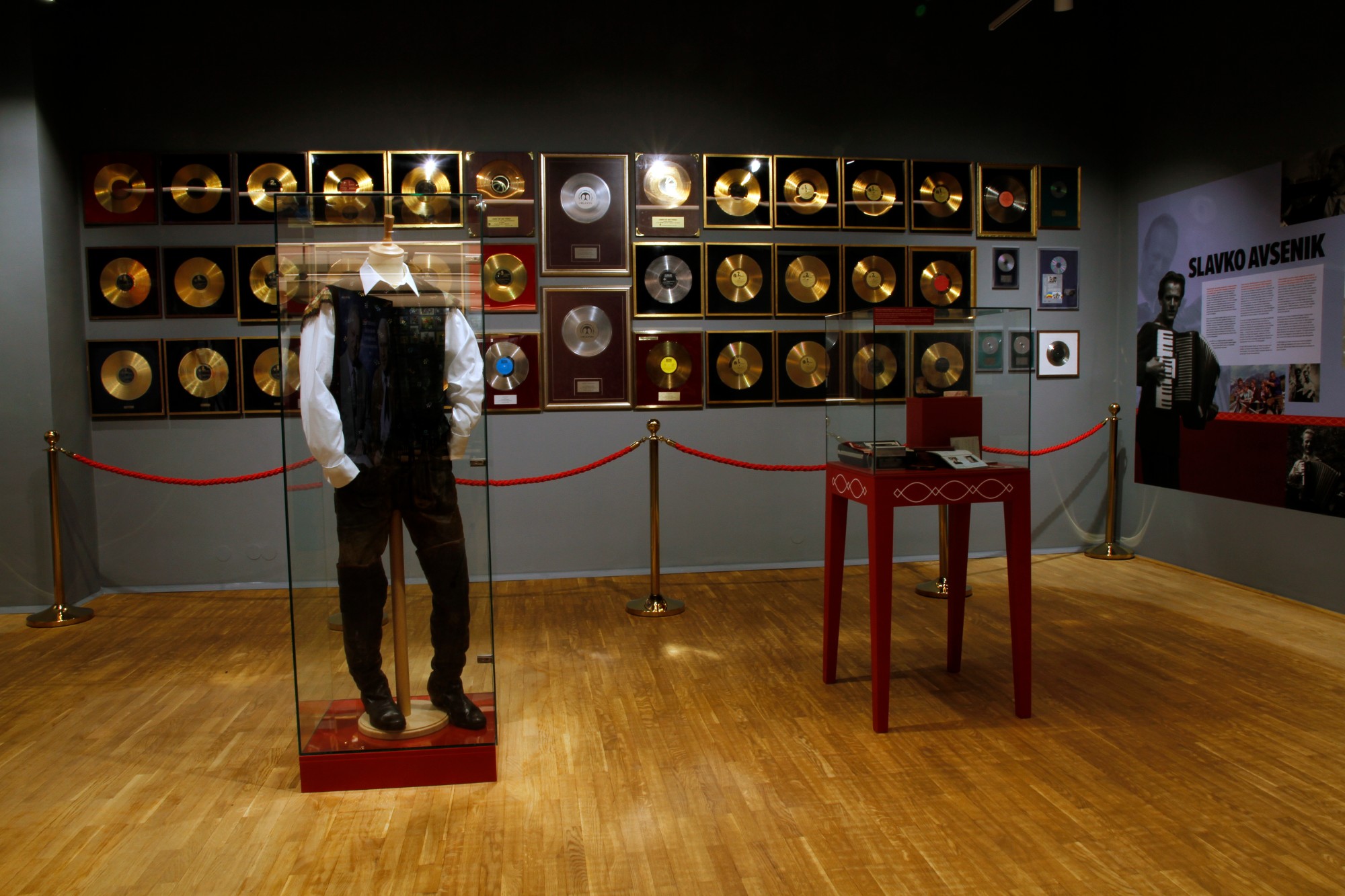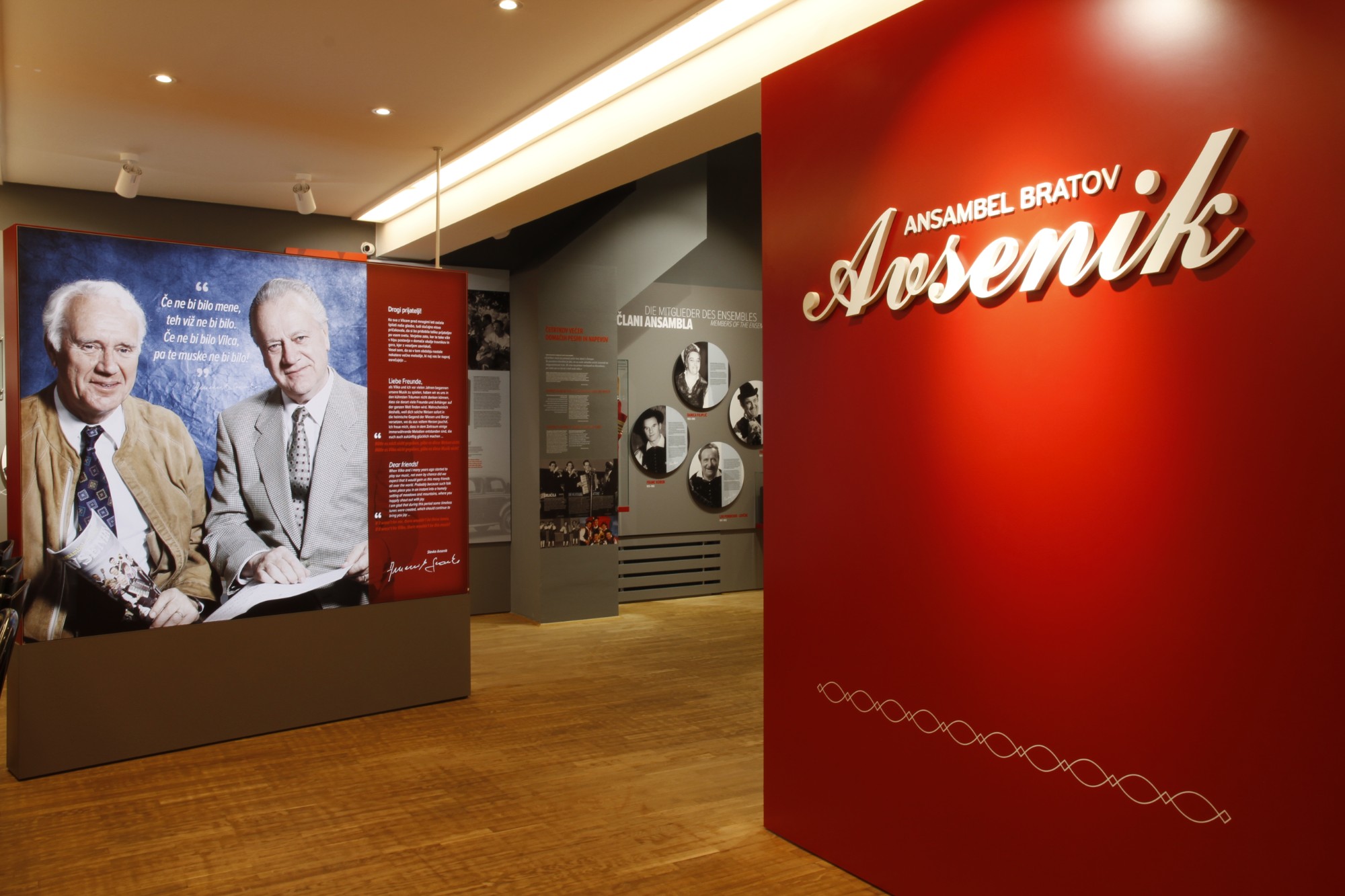Located in Begunje na Gorenjskem, the Avsenik Museum includes an auditorium that seats 70, exhibition rooms, a shop offering a selection of musical instruments, sheet music, recordings and souvenirs, as well as a restaurant.
First opened in 1989, and renovated in 2016, the Museum provides an insight into the Avsenik Brothers’ road to fame – the surge in popularity of their pop-folk music, and an overview of the ensemble’s costume design. The exhibits include the ensemble’s instruments, as well as their numerous distinctions and awards. The prizes won in Germany, the US, Canada and Austria feature awards presented to the ensemble by the communities of Slovenian immigrants in recognition of their contribution to the promotion of Slovenia. Also on show are tour schedules, photographs, costumes and gramophone record jackets.
Screened at the Museum auditorium, a documentary film vividly portrays the ensemble’s story, while the memorial rooms located on the upper floor offer an insight into the private life and history of the Avsenik family.
Apart from the Museum, the Avsenik Brothers’ birthplace also includes the Avsenik Shop, which sells audio formats, music scores and an array of musical instruments – an item attracting particular notice is the Hohner chromatic accordion with button keys on the right-hand side. In 1965, Hohner, a German musical instrument company, offered Slavko Avsenik one of their piano accordions, and he remained faithful to it throughout his stage career. The Hohner model was developed in accordance with the evolution of Slavko Avsenik’s style and named after him (the Slavko Avsenik model, today known as Morino).
Avsenik Brothers Ensemble
The Avsenik Brothers were the most prominent pop-folk music figures in Slovenia and Europe. Slavko Avsenik (1929–2015), together with his brother Vilko Ovsenik (1928–2017) (who adopted the old, pre-war spelling of his surname) and their legendary ensemble, was instrumental in shaping both the sound of, and style of costume associated with, this genre. The influence of Avsenik’s innovative style spread beyond Slovenia’s borders, extending to Germany, Austria, Switzerland and the Benelux Countries, where hundreds of similar folk-pop orchestras were modelled after the Ansambel bratov Avsenik (The Avsenik Brothers Ensemble or, in German, Slavko Avsenik und seine Original Oberkrainer). Under their influence, a music genre known as the Cleveland-style polka, developed by Slovenian immigrants, took off in the US.
The saga of the Avsenik Brothers, which assumed the proportions of a worldwide phenomenon, began in their native town of Begunje na Gorenjskem. A self-taught musician, Slavko learnt to play the piano accordion by ear, while his brother Vilko, studying clarinet at the Ljubljana Academy of Music, obtained a university education. Slavko first appeared on Radio Ljubljana in 1953 and was broadcast from Austria on the Slovenian Hour radio show. He gradually formulated his ensemble line-up, which initially included a guitar and double bass as well as accordion.
He was later joined by his brother Vilko on clarinet. Vilko attended to the arrangements and recruited additional members, singers and instrumentalists: trumpeter Franc Košir, baritone Franc Ogrizek and singers Danica Filiplič and Franci Koren. Vilko came up with the characteristic line-up – consisting of accordion, trumpet, baritone, clarinet and guitar, which invested the ensemble’s sound with a unique pop-folk quality. Growing in popularity, their fame spread from Austria to Germany, where the ensemble appeared in numerous broadcasts, films and concerts.
Signing a recording contract with Teldec (Telefunken-Decca) in 1960, the ensemble solidified their reputation and rose to dizzying heights throughout Europe. The landmarks of the ensemble’s career include a performance at the Berlin Stadium before an audience of 80,000 and at the Berlin Philharmonic, tours of the US and Canada and a one-hour ZDF German network special in 1980. The ensemble’s style of music and costume was influenced by different ensemble members, singers and instrumentalists, including Alfi Nipič, Franc Košir, Mik Soss, Ema Prodnik, Franc Koren and Lev Ponikvar. Lyricists and acknowledged poets Ferry Souvan, Gregor Strniša and Frane Milčinski-Ježek wrote the ensemble’s lyrics.
Avsenik’s influence extended as far as North America. In 1958, Johnny Pecon’s adaptation of Slavko’s Tam, kjer murke cveto (Where the Wild Orchids Bloom) generated an all-time-favourite Cleveland-style hit, Little Fella. Avsenik’s wealth of compositions, alongside those by Matt Hoyer and Dr. William J. Lausch-Doc and Frankie Yankovic – ranks him among the leading representatives of the Cleveland-style repertoire.
One of Slovenia’s most popular music orchestras, the Avsenik Brothers Ensemble spawned a series of similar line-ups. With record sales amounting to 32 million units, the ensemble were awarded thirty-one gold records, and two diamond and one platinum.
Avsenik’s most famous waltzes include Pastirček (The Little Shepherd), Slovenija, od kod lepote tvoje (Slovenia, wherefrom Your Beauties), Veter nosi pesem mojo (The Wind Carries My Song), Prelepa Gorenjska (The Beautiful Gorenjska) and Tudi ti nekoč boš mamica postala (You Too Shall Be a Mother One Day). The Avsenik Brothers’ signature tune and most popular composition is the polka Na Golici (Trompeten-Echo in German, Trumpet Echoes in English), which is considered to be the world’s most played instrumental composition in the genre.
What generated the formation of countless similar orchestras in Slovenia and internationally, besides the characteristic sound and melodiousness of the ensemble’s original songs, were the band’s vividly coloured and conspicuous stage costumes. This unique outfit first emerged with folk musicians in the bourgeois milieu of Gorenjska (Upper Carniola). Initially wearing an attire resembling that of folk musicians, the Ansambel bratov Avsenik later added more glitter and glamour to a partly stylised national costume, thus creating a stage identity that became a synonym for pop-folk music, popularly known abroad as the “Oberkrainer” style.
Maia Juvanc
